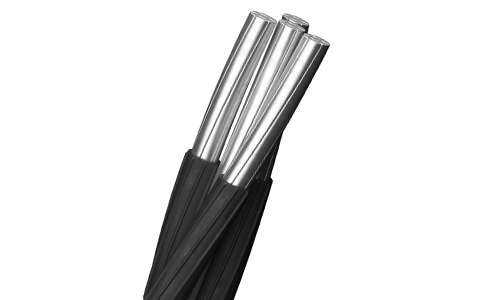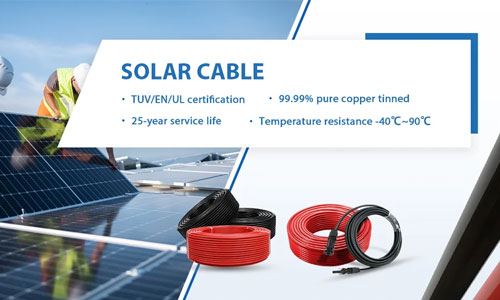Self-supporting wire SIP-5ng AsXSn Description
The carrier is missing. The design of the wire is a bundle of conductive and zero conductors of the right direction with a twisting pitch of no more than 450 mm. The operating voltage of the self-supporting insulated wire is up to 0.6 kV / 1 kV with a frequency of up to 50 Hz. SIP wires are never copper. Its minimum cross-section starts from 16 mm2. The price of the self-supporting insulated wire depends on the cross-section.The most common sizes of wire cross-section for connection in SIP power grids are 2×25, 4×16, 4×25, 4×35, 4×50, 4×70, 4×95.
Compared to bare power lines (for example, aluminum AC wire), self-supporting insulated wire has a sufficient number of advantages:
– Due to solid insulation, phase-to-phase short circuits and subsequent wire breaks are excluded. Accordingly, on the line there will no longer be such a sad picture as numerous crossings in the spans;
– you can use supports of smaller overall dimensions, for example, instead of the SV-110 and SV-95 supports, take the SV-85 racks. Or even use wooden ones;
– the distances from the self-supporting insulated wire to buildings and structures are reduced in comparison with bare wires, respectively, there are more options for using power lines in dense residential buildings;
– lower losses during transmission of electricity due to low inductive resistance;
– the possibility of laying self-supporting insulated wire on the facades of buildings;
The main characteristic of the insulating material is that it does not support combustion. The SIP-5ng wire in most of its characteristics corresponds to the AsXSn wire produced on European equipment. It is used, similarly to other SIP wires, in the construction of power transmission lines and overhead electric mains.
Self-supporting wire SIP-5ng AsXSn Construction
Twisting: insulated conductive conductors are twisted with a twisting pitch of not more than 45 cm. The twisting has a right direction.Core material: round aluminum, multi-wire sealed. The wire is made with a cross section of 16-120 mm2. In this case, if the nominal cross-section does not exceed 25 mm2, a right-sided twisting is used, for large sizes – a left-sided one.
Placeholder: none
Screen: none
Armor: none
Core: steel wire
Insulation: light-stabilized cross-linked polyethylene, non-combustible silane-crosslinkable composition based on a copolymer of polyethylene with vinyl acetate.
Deciphering SIP-5ng (AsXSn)
S – self-supportingI – isolated
P – wire (it’s a wire, not a cable as some people mistakenly call it)
ng – not supporting combustion
AsXSn abbreviation in the interpretation of the European version – self-supporting wire (s) with aluminum conductors (A), insulated from “XLPE” resistant to ultraviolet radiation (XS) and flame retardant (n)
| Nominal conductor cross-section, mm2 | Permissible load current for networks with a voltage of 0.6 / 1 kV, A, no more | Allowable one-second short-circuit current. kA, no more | |||||
| 16 | 100 | 1,5 | |||||
| 25 | 130 | 2,3 | |||||
| 35 | 160 | 3,2 | |||||
| 50 | 195 | 4,6 | |||||
| 70 | 240 | 6,5 | |||||
| 95 | 300 | 8,8 | |||||
| 120 | 340 | 10,9 | |||||
| Mechanical characteristics | |||||||
| Wire nomenclature | Nominal conductor diameter, mm | Outer wire diameter, mm | Estimated weight of 1 km of wire, kg | Minimum breaking strength of load-bearing conductors, kN, not less | Nominal insulation thickness, mm | ||
| Wire SIP-5ng 2×16 | 4,8 | 16,8 | 138,1 | 5 | 1,2 | ||
| Wire SIP-5ng 4×16 | 4,8 | 20,2 | 276,2 | 9,8 | 1,2 | ||
| Wire SIP-5ng 4×25 | 6 | 23,4 | 400,5 | 15,4 | 1,2 | ||
| Wire SIP-5ng 4×35 | 7 | 26,1 | 521,2 | 21,5 | 1,2 | ||
| Wire SIP-5ng 4×50 | 8,4 | 30,9 | 730,8 | 30,7 | 1,4 | ||
| Wire SIP-5ng 4×70 | 9,8 | 34,6 | 983,1 | 43 | 1,6 | ||
| Wire SIP-5ng 4×95 | 11,6 | 39,9 | 1304,6 | 58,4 | 1,7 | ||
| Wire SIP-5ng 4×120 | 13 | 43,6 | 1624,4 | 73,7 | 1,7 | ||















